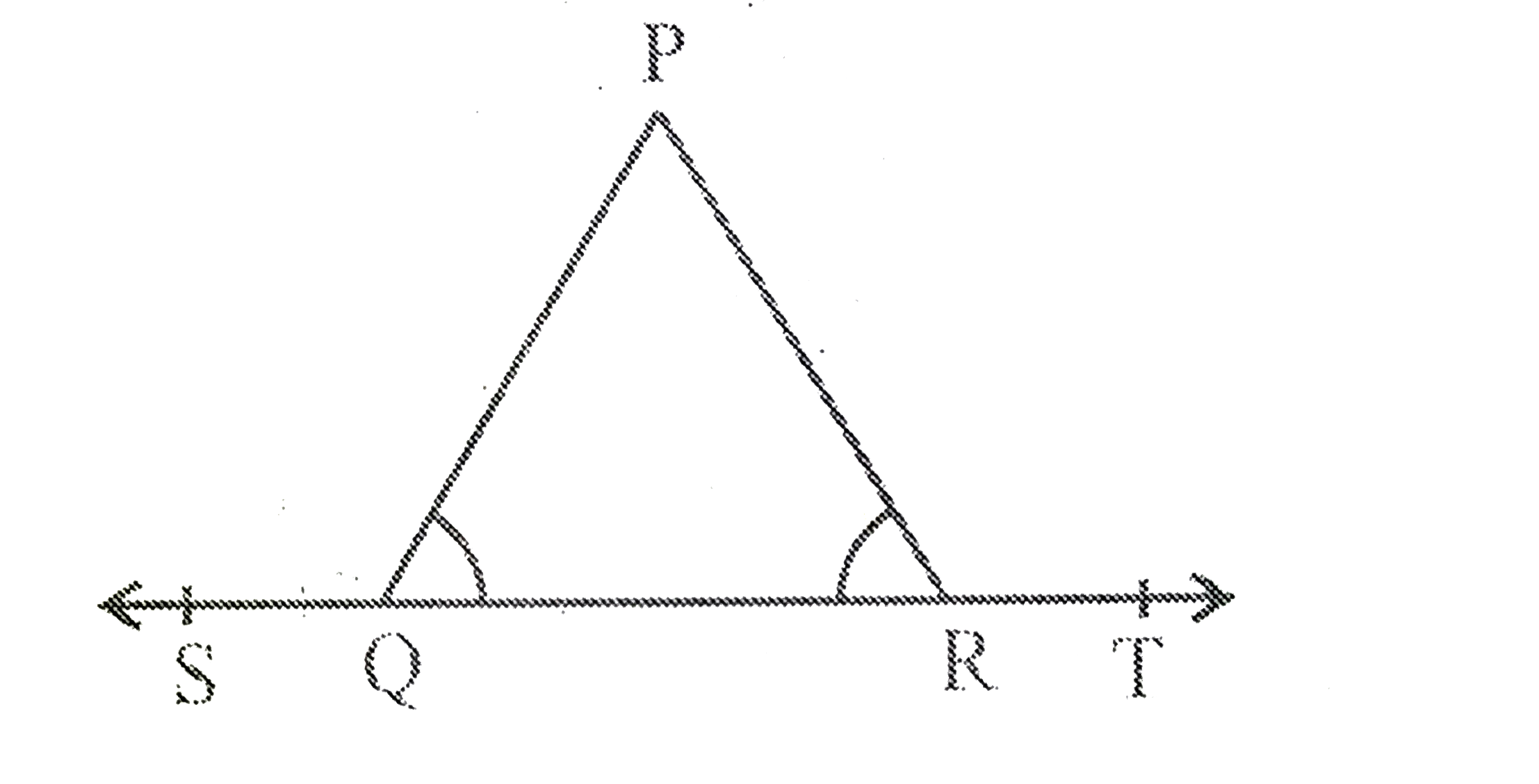In △PQR , right-angled at Q, PQ=3cm and PR=6cm . Determine ∠P and ∠R .
To solve for angles ∠P and ∠R in triangle △PQR, where ∠Q is the right angle, PQ=3cm, and PR=6cm, we can follow these steps:
Step 1: Identify the sides of the triangle
In triangle PQR:
- PQ is the base (adjacent side to ∠P).
- QR is the height (opposite side to ∠P).
- PR is the hypotenuse.
Step 2: Use the Pythagorean theorem to find QR
Since △PQR is a right triangle, we can use the Pythagorean theorem:
PR2=PQ2+QR2
Substituting the known values:
62=32+QR2
36=9+QR2
QR2=36−9
QR2=27
QR=√27=3√3cm
Step 3: Find ∠P using the cosine ratio
To find ∠P, we can use the cosine ratio:
cosP=AdjacentHypotenuse=PQPR
Substituting the values:
cosP=36=12
From trigonometric values, we know:
cos60∘=12
Thus,
∠P=60∘
Step 4: Find ∠R
We know that the sum of angles in a triangle is 180∘:
∠P+∠Q+∠R=180∘
Given ∠Q=90∘ and ∠P=60∘:
60∘+90∘+∠R=180∘
∠R=180∘−150∘=30∘
Final Answer
Thus, the angles are:
∠P=60∘and∠R=30∘
---
In triangle PQR:
- PQ is the base (adjacent side to ∠P).
- QR is the height (opposite side to ∠P).
- PR is the hypotenuse.
Since △PQR is a right triangle, we can use the Pythagorean theorem:
PR2=PQ2+QR2
Substituting the known values:
62=32+QR2
36=9+QR2
QR2=36−9
QR2=27
QR=√27=3√3cm
To find ∠P, we can use the cosine ratio:
cosP=AdjacentHypotenuse=PQPR
Substituting the values:
cosP=36=12
From trigonometric values, we know:
cos60∘=12
Thus,
∠P=60∘
We know that the sum of angles in a triangle is 180∘:
∠P+∠Q+∠R=180∘
Given ∠Q=90∘ and ∠P=60∘:
60∘+90∘+∠R=180∘
∠R=180∘−150∘=30∘
Thus, the angles are:
∠P=60∘and∠R=30∘
Topper's Solved these Questions
Similar Questions
Knowledge Check
If P+Q=Rand|P|=|Q|=√3and|R|==3, then the angle between P and Q is
Aπ/4Bπ/6Cπ/3Dπ/2
In ΔOPQ, right-angled at P, OP = 7 cm andOQ − PQ = 1 cmDetermine the values of sin Q and cos Q.
View SolutionIn ABC , P and Q are points on sides AB and AC respectively such that PQBC . If AP=4cm, PB=6cm and PQ=3cm , determine BC .
View SolutionIn PQR , M and N are points on sides PQ and PR respectively such that PM=15cm and NR=8cm . If PQ=25cm and PR=20cm state whether MNQR .
View SolutionIn Fig. 4.230, each of PA, QB, RC and SD is perpendicular to l . If AB=6cm , BC=9cm , CD=12cm and PS=36cm , then determine PQ, QR and RS . (FIGURE)
View SolutionIn Fig. 6.15, ∠PQR=∠PRQ, then prove that ∠PQS=∠PRT.

View SolutionIn ΔPQR, if PQ=QR and L,M and N are the mid-points of the sides PQ,QR and RP respectively. Prove that LN=MN.

View SolutionIn a ABC , P and Q are point on the sides AB and AC respectively, such that PQBC . If AP=2.4cm , AQ=2cm , QC=3cm and BC=6cm , find AB and PQ .
View Solution
